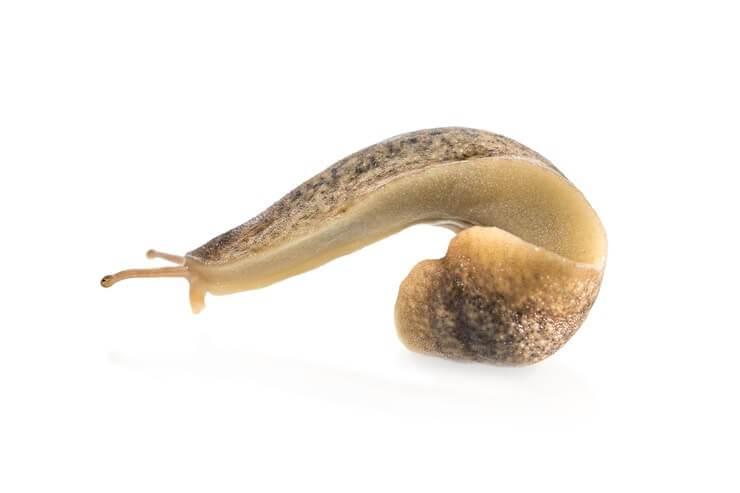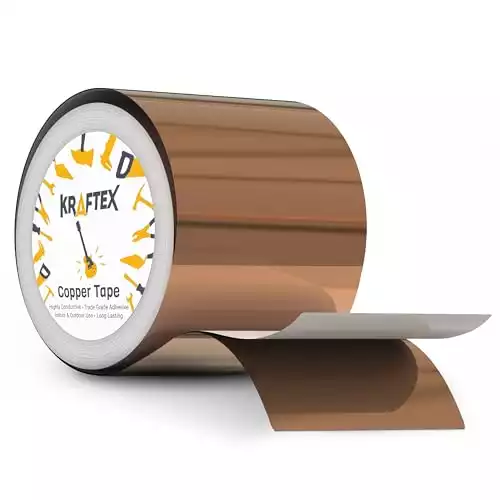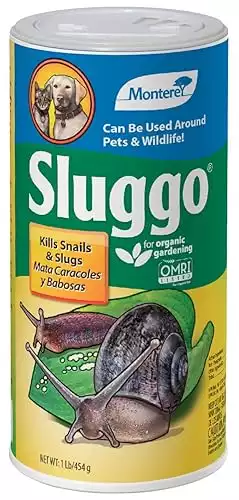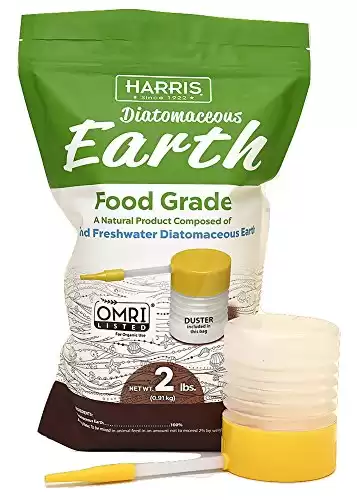Encountering slugs in your bathroom can be a distressing sight.
These unwelcome guests thrive in moist environments, feasting on mold and leaving behind unpleasant slime trails.
The presence of slugs not only spoils the aesthetics of your bathroom but also poses a challenge to maintain hygiene with their sticky mucus residue.
Fortunately, with the right knowledge and effective, nontoxic strategies, you can reclaim your bathroom, ensuring it remains a slug-free zone.
This guide will walk you through the steps to get rid of slugs from your bathroom, restoring peace and cleanliness.

What Should You Know About Slugs?
The simplest way to describe slugs is that they are snails without shells.
They are slimy creatures that secrete a slime to grease the surface they are traveling on and protect their delicate bodies.
Slugs have an exceptionally fat body with a pair of eyestalks similar to snails.
Naturally, their eyestalks are for vision purposes, but these are also where slugs have their olfactory organs.
Under their eyestalks, there are also two tiny tentacles they use as taste buds and feelers.
Inside those tentacles are their tongue-like organ called a radula, which has teeth-like protrusions that slugs use to ingest food.
There are many slug species, but what types of slugs are most likely to invade your bathrooms?
If you spot slugs in the shower or bathtub, they are more likely a cellar slug.
They have patterned bodies that range in color from yellow to green and sometimes brown-grey.
These slugs can grow up to 100 millimeters when fully grown, but other species can grow twice as long.
Unlike most snails that become dormant from autumn to winter, slugs remain active all year round.
Damp conditions and warmer weather also increases their activity.
But since slugs are nocturnal mollusks, you’ll likely encounter them when you take your evening shower.
Slugs are not known to be harmful to humans.
Instead, they are more of a nuisance, especially with the excess mucus they leave in their trail.
But some slugs carry parasitical lungworms, which can infect pets when they get in contact with the slug’s infested slime.
Slug slime also has anesthetic properties, which can cause numb mouth in pets.
Why Are There Slugs in My Bathroom?
Slugs will come inside your bathroom for something they need, most likely for shade, warmth, and moisture.
In other cases, slugs will find refuge in your shower because it has plenty of their food.
These slimy pests feed on almost anything: paper, dead pests and animals, decomposing plants, feces, pet food, young indoor plants, mold, and fungi.
If you turned your bathroom into a tropical oasis with many bathroom plants, slugs would feed on them.
If you have a moldy shower, slugs will take it as their eat-all-you-can buffet.
Do you have pets?
Even pet food littering on your bathroom floor will attract slugs indoors.
They have a remarkable sense of smell to spot a food source in your bathroom from outside.
How Do Slugs Get into the Bathroom?
Slugs can squeeze their body through tiny cracks and enter your bathroom, having no hard shell nor bones.
They can squeeze inside holes that are about half as large as its body.
These slimy pests can also climb vertical surfaces or travel upside-down.
Their common entry points into your bathroom include the space under your bathroom doors and windows, holes and cracks on walls, damaged joints along bathroom walls, and tears on window screens.
They can also enter through holes drilled for electrical wiring and cut-outs for dryer ducts.
Slugs enter your bathroom and find refuge in areas that are dark and damp, especially during the day.
That’s why if you follow their slime trails, you often see a slug in the bathroom sink, drains, and even your bathroom vent.
Anywhere in your bathroom where they won’t get disturbed and has excess moisture, like the back of the shower curtain or behind the toilet, is where slugs will retreat come morning.
How to Get Rid of Slugs in the Bathroom
There are many wise, less toxic methods to get rid of slugs in your bathroom.
You’ll only need a couple of things and most items you probably already have at home.
It’s pretty easy to recognize slug infestation. For example, if you see these signs in your bathroom:
- Are there sticky slime trails on the bathroom floor and across the walls?
- Have you seen ragged holes and damaged leaves on your bathroom plants?
- Did you spot, or worse, step on tiny slugs in bathroom floors?
It’s time to take measures and get rid of slime in the bathroom once and for all. Here’s how.
Step 1: Prevent Any More Slug Infestation
First thing’s first, cover all possible entry points to prevent new slugs from coming into the bathroom.
- Seal all possible slug entry points into your bathroom.
Survey your bathroom and find all possible entry points slugs may use to enter your bathroom.
If there are significant gaps in the walls, floors, or ceiling, you can use expanding foam to cover those holes and cracks.
Silicone sealant also works for tiny cracks.
- Make an effective barrier against slugs.
Making barriers also keeps slugs out so that you can limit the infestation in your bathroom.
This way, there aren’t any more slugs you need to deal with except those already inside your bathroom.
There are many practical slug barriers you can use: copper strips, sharp sand, salt.
You can use copper tape to cover cracks and holes in the bathroom.
Copper tape acts as an effective barrier against slugs and snails.
Lining the bottom of the door with copper will also deter slugs because they will get an electric shock once they crawl through the copper.
Also, slugs don’t like crawling on anything sharp like coarse sand.
The same goes for salt but using salt against slugs works two ways.
It can serve as a barrier to keep slugs from entering the bathroom and kill them by drawing out water from their bodies until they get dehydrated and die.
Step 2: Catch Slugs Hiding in the Bathroom
Slugs have a habit of hiding in the dark and undisturbed areas in the bath, so you’ll need to lure them out of their hiding spots.
Making slug traps and baits are effective ways to catch and drain slugs to get rid of them.
- DIY slug traps.
You can create a simple slug trap with an unused container topped with beer.
The yeast in the beer will attract slugs from their hang-out place.
They will come crawling into the beer looking in hopes of finding food but will eventually drown.
- Put up some slug baits.
There are also ready-made slug baits you can purchase but beware of those containing metaldehyde.
While they are effective in eliminating slugs in the bathroom, they are toxic to children and pets.
Choose slug baits based on the nontoxic compound iron phosphate.
Sprinkle them in infested areas, including the shower, drain, sink, toilet, and windowsills.
Once slugs feed on this compound, they will stop eating and eventually die a few days later.
- 2 in 1: designed to bait and poison slugs
- Safe around wildlife and pets as it contains natural iron phosphate
- Works well even in wet conditions
Step 3: Kill Slugs with Diatomaceous Earth
Diatomaceous earth is an all-around pest killer that can keep your bathroom slug-free after an infestation.
- The all-natural powder comes with a duster and can be applied to problematic spots of your bathroom
- The silica-based diatoms will injure and dehydrate water-dependent insects: silverfish, slugs, and many more.
- The DE is food grade and is safe to use around pets and kids.
You can use it either as a barrier or sprinkle it directly on any slug you see crawling across the bathroom.
The sharp edges of diatomaceous earth will pierce through the soft and delicate bodies of slugs that crawl over it.
Once they get exposed to this compound, the DE will absorb their moisture until they die from dehydration.
But you might not want to use it on the shower floor just before you take a shower.
Diatomaceous earth pretty much loses its effectiveness from getting wet.
How to Prevent Slugs from Coming Back to My Bathroom
Preventing slugs from returning to the bathroom begins with getting rid of anything that attracted them inside.
Eliminating their possible hiding places will also make your bathroom less attractive to slugs.
- Make sure your bathroom door closes properly. Also, seal and cover door edges and bottoms where slugs may crawl into the bathroom. Replace any door sweeps or weather stripping that has gone missing or damaged.
- Clean your bathroom, especially the shower, drains, and sinks, of stubborn mold that often attracts slugs inside. Vinegar and bleach are two standard cleaning solutions that can remove resistant mold from shower caulk or tile grout.
- Bring in slug repelling plants inside the bathroom. Slugs may munch on most plant leaves, but there are plants they absolutely hate: ferns, euphorbias, hydrangeas, rosemary, lavender, Japanese anemone, and geraniums.
But remember, keeping slugs out of the bathroom is an ongoing process.
It’s not a one-time treatment, so monitoring once in a while will keep slugs away and prevent another infestation in the bathroom.
The Ultimate Guide to Bugs in the Bathroom
Wondering about the presence of tiny bugs in your shower? Look no further. Our comprehensive guide explores the world of insects in the bathroom, equipping you with valuable insights and actionable strategies to address them.




